Introduction to Thermo-fluid Dynamics of Two-phase Flow
- Fundamentals of two-phase flow
- Two-phase flow definition
- Fundamentals of computational simulation code for two-phase flow
- Fundamentals of mass, momentum, and energy conservation equations for two-phase flow
- Homogeneous flow model, drift-flux model, two-fluid model
- Fundamentals of several constitutive equations
- Flow regime map
- Void fraction
- Interfacial area concentration
- Frictional pressure drop
- Interfacial force
- Two-phase flow modeling
Fundamentals of two-phase flow
What is two-phase flow
Two-phase flow is composed of two immiscible mediums.
- Gas-liquid two-phase flow
- Solid-gas two-phase flow
- Solid-liquid two-phase flow
- Liquid-liquid two-phase flow
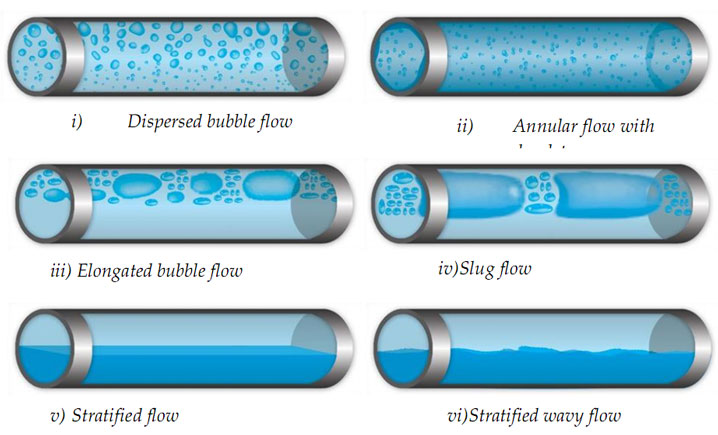
| Class | Typical regimes | Geometry | Configuration | Examples |
|---|---|---|---|---|
| Separated flows | Film flow | 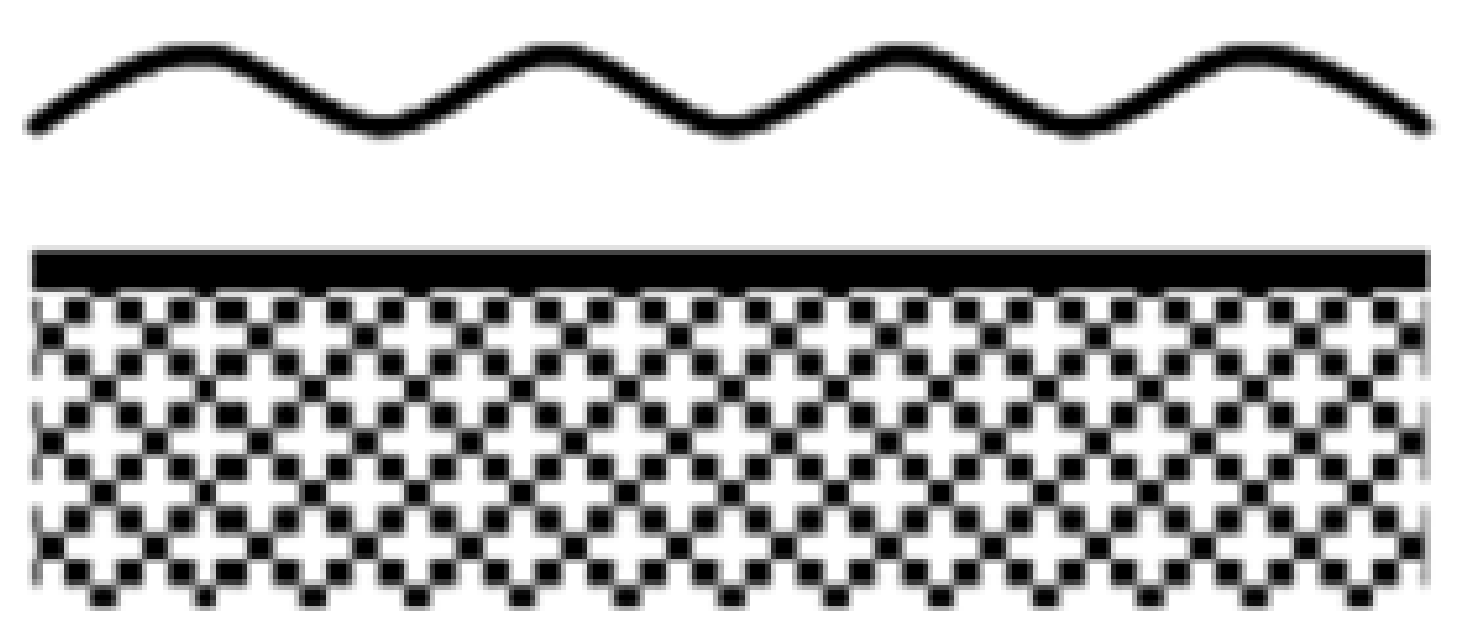 | Liquid film in gas; Gas film in liquid | Film condensation; Film boiling |
| Annular flow | 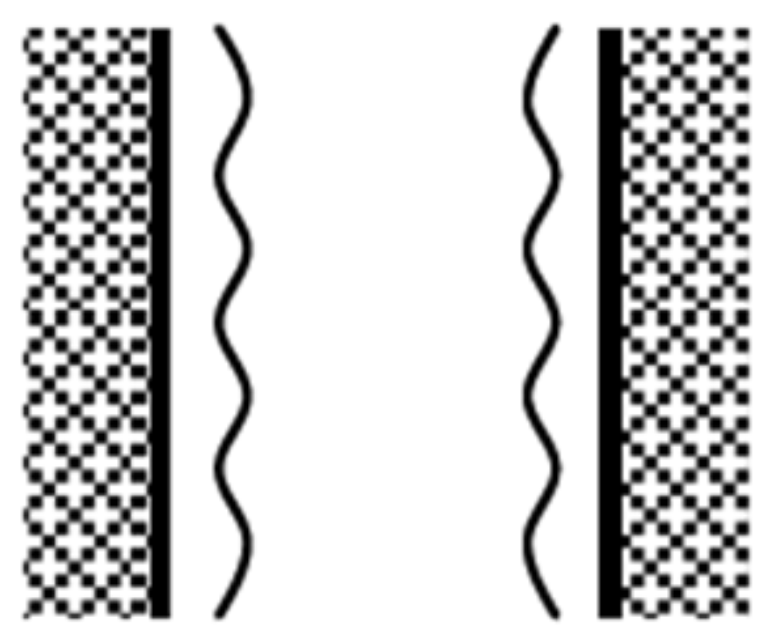 | Liquid core and gas film; Gas core and liquid film | Film boiling; Boilers | |
| Jet flow | 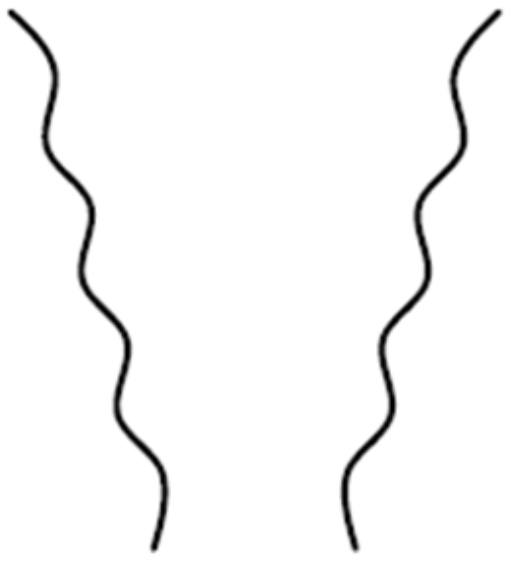 | Liquid jet in gas; Gas jet in liquid | Atomization; Jet condenser | |
| Mix or Transactional flows | Cap, Slug or Churn-turbulent flow | 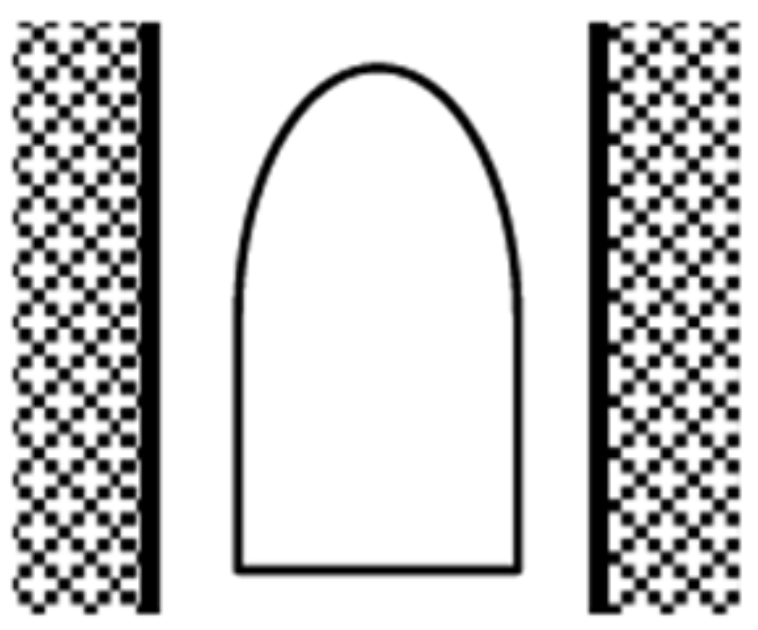 | Gas pocket in liquid | Sodium boiling in forced convection |
| Mix or Transactional flows | Bubbly annular flow | 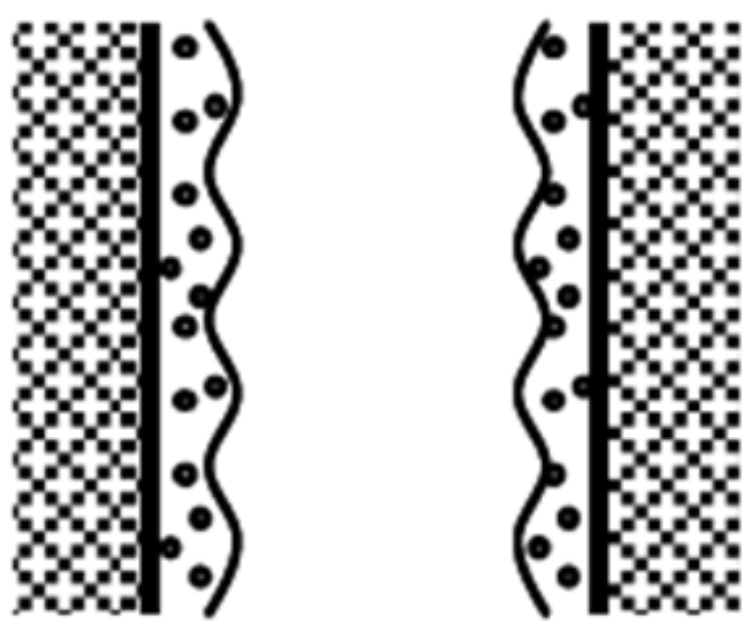 | Gas bubbles in liquid film with gas core | Evaporators with wall nucleation |
| Mix or Transactional flows | Droplet annular flow |  | Gas core with droplets and liquid film | Steam generator |
| Mix or Transactional flows | Bubbly droplet annular flow | 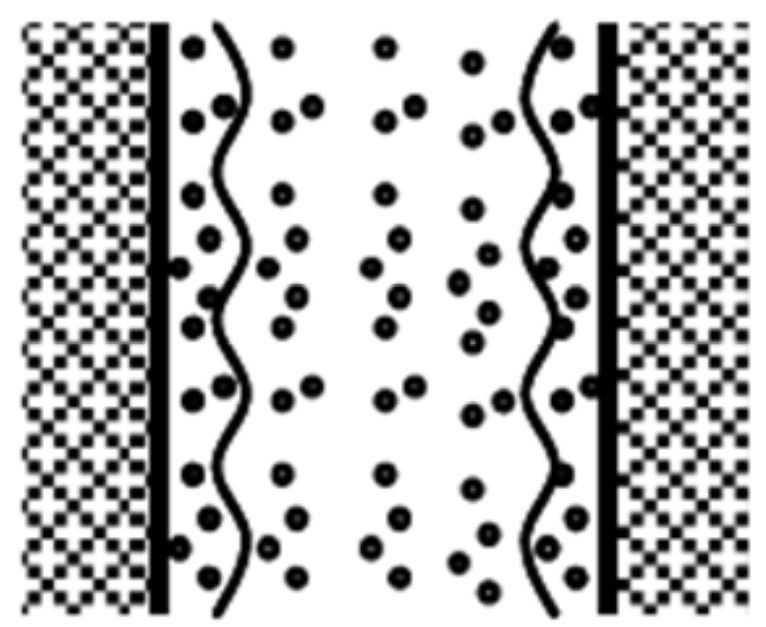 | Gas core with droplets and liquid film with gas bubbles | Boiling nuclear reactor channel |
| Dispersed flows | Bubbly flow | 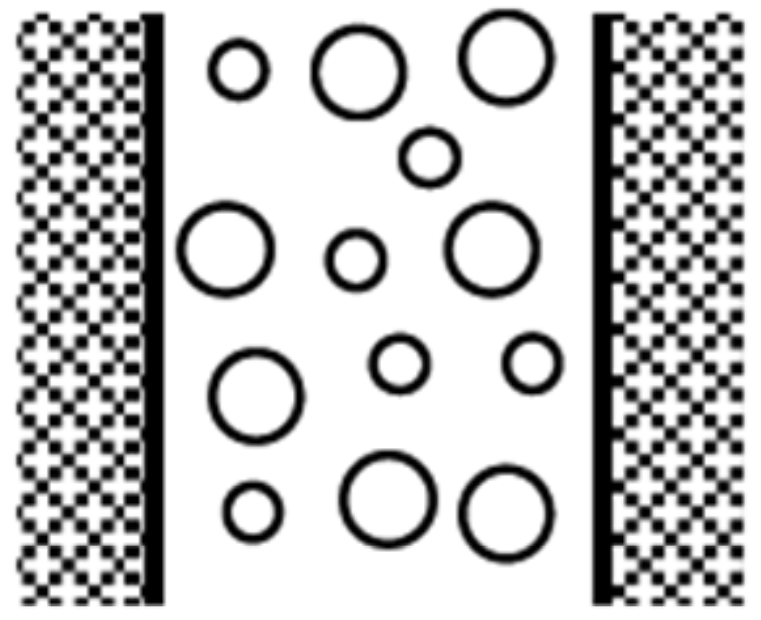 | Gas bubbles in liquid | Chemical reactors |
| Dispersed flows | Droplet flow |  | Liquid droplets in gas | Spray cooling |
| Dispersed flows | Particulate flow | 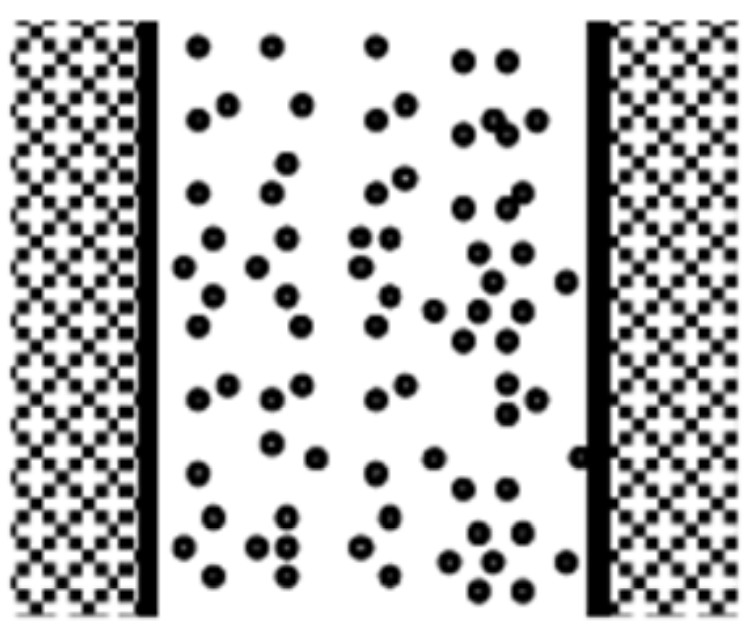 | Solid particles in gas or liquid | Transportaion of powder |


- Bubbly-to-Slug:
Why is two-phase flow so difficult
Different Density:
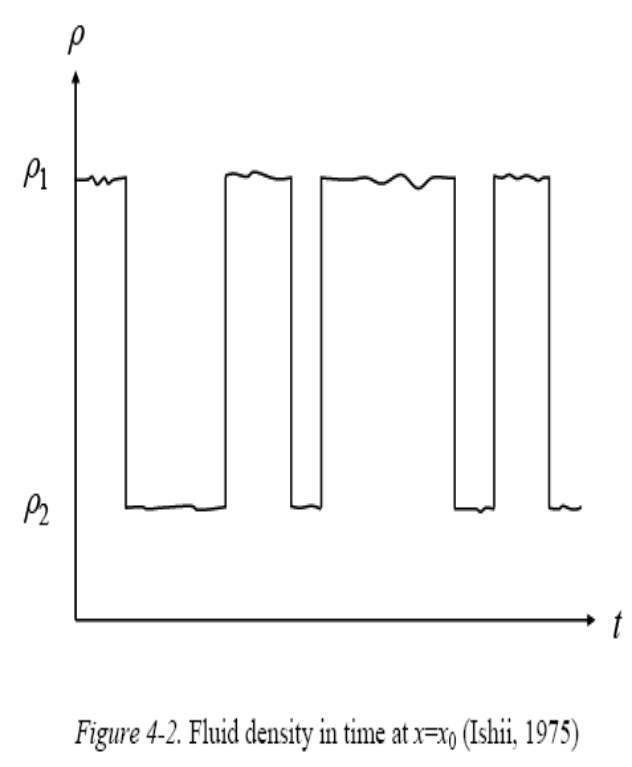
Peculiar characteristics of two-phase flow dynamics
Thermal and Kinematic Non-Equilibrium
- Driving Mechanism: Natural circulation flow, forced convective flow (laminar or turbulent flow)
- Flow Regime: Dispersed (bubbly, slug, churn flow), separated (annular or stratified flow)
- Flow Orientation: Upward, downward, inclined, counter current, elbow, sudden expansion & contraction
- Flow Channel Scale: Micro, mini, conventional (or medium-size), large
- Phase Change: Wall nucleation & condensation, interfacial heat transfer, non-condensable gas effect
- Wall Heat Transfer: One-component with phase change, two-component without phase change
- Wall Effect: CHF, bubble nucleation, hydrophilic or hydrophobic
- Characteristic Length Scale: Kolmogorov scale, bubble size, sub-channel size, flow channel size
- Pressure and Temperature: Room temperature-to-nuclear reactor core temperature
- Gravity: Microgravity-to-elevated gravity
- Flow Instability: Geysering, chugging, density-wave oscillation
- Pressure Wave and Shock Wave: Water hammer, steam explosion
- Critical Flow: Choking flow
- Flow Structure: Internal flow, external flow
- Coupling between Two-Phase Flow & Structure: Flow induced vibration
Fundamentals of computational simulation code for two-phase flow
Key parameters in two-phase flow analysis
- Mass conservation eq.
- Momentum conservation eq.
- Energy conservation eq.
Simplified computational code structure
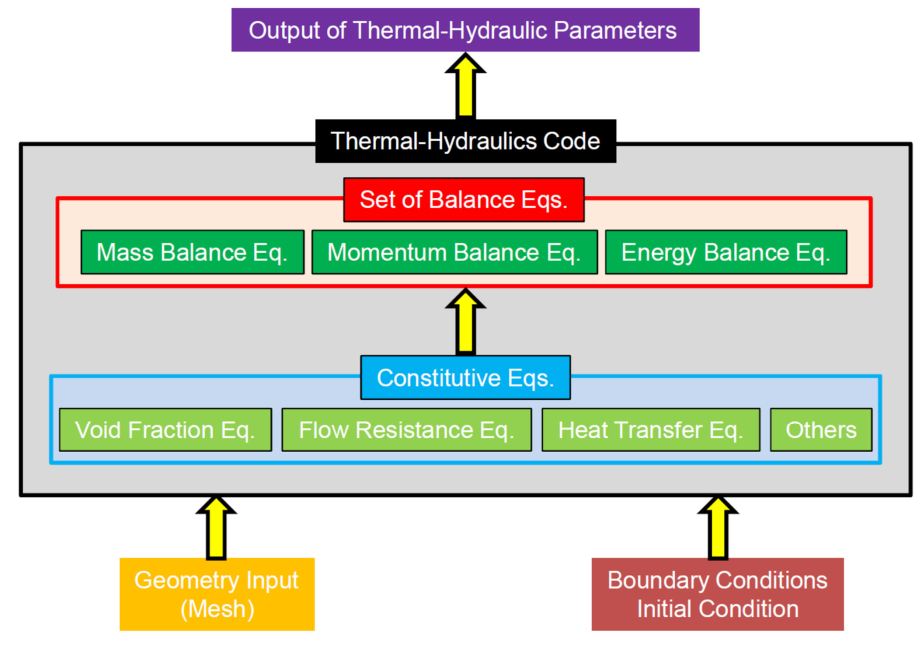
No. of balance eq. Single-phase flow: 3 Two-phase flow: 3(mixture model), 6 (=3×2), or others? Assumptions
- Relative velocity b/w gas & liquid phases
- Temperature difference b/w gas & liquid phases Two-phase flow model
- Homogeneous flow model
- Mixture model
- Two-fluid model Pros. & Cons.
- Numerical instability
- Available constitutive eqs.
Averaging methods
- Time domain
- Instantaneous
- Time average
- Space domain
- Local
- Control volume (or surface) average
- 1D (Nuclear system analysis)
- Porous (Steam generator analysis)
- Sub-channel (Sub-channel analysis)
- 3D (Detailed analysis of flow field)
Fundamentals of mass, momentum, and energy conservation equations for two-phase flow
Instantaneous single-phase flow
Reynolds number: (inertia force / viscous force)
N-S equation (Instantaneous formulation):
- (Surface force) = (Pressure)+(Shear stress)
- (Volumetric force) = (Gravity)
Time-averaged single-phase flow
N-S equation (Time-averaged formulation):
Reynolds stress: Momentum transfer due to turbulence
Turbulence models
- Mixing length model
model
Time-averaged two-phase flow
Two-phase flow
- Instantaneous formulation of gas and liquid phases
- Time-averaged formulation
- Kinematic condition (Relative velocity)
- Homogeneous model
- Mixture model (1 mixture momentum eq.)
- Slip model
- Drift-flux model
- Two-fluid model (2 momentum eq.)
- Kinematic condition (Relative velocity)
- Thermal condition (Temperature difference)
- Thermal equilibrium (1 mixture energy eq.)
- Thermal non-equilibrium (2 energy eq.)
- Evaporation (
) - Condensation (
)
Drift-flux model
4 equations:
- Mixture continuitv equation
- Continuity equation for phase 2
- Mixture momentum equation
where
- Mixture Energy equation
Total number of unknown variables: 27: Flow regime
Two-fluid model [core]
Totally 6 equations:
- Continuity equation
- Momentum equation
- Energy equation
- 3 jump conditions
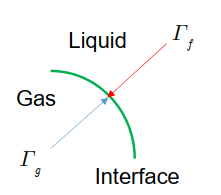
Total number of unknown variables: 36: Flow regime
With HEM, it becomes 3 equations
Summary of two-phase flow formulation

Fundamentals of several constitutive equations
One-dimensional computational code structure
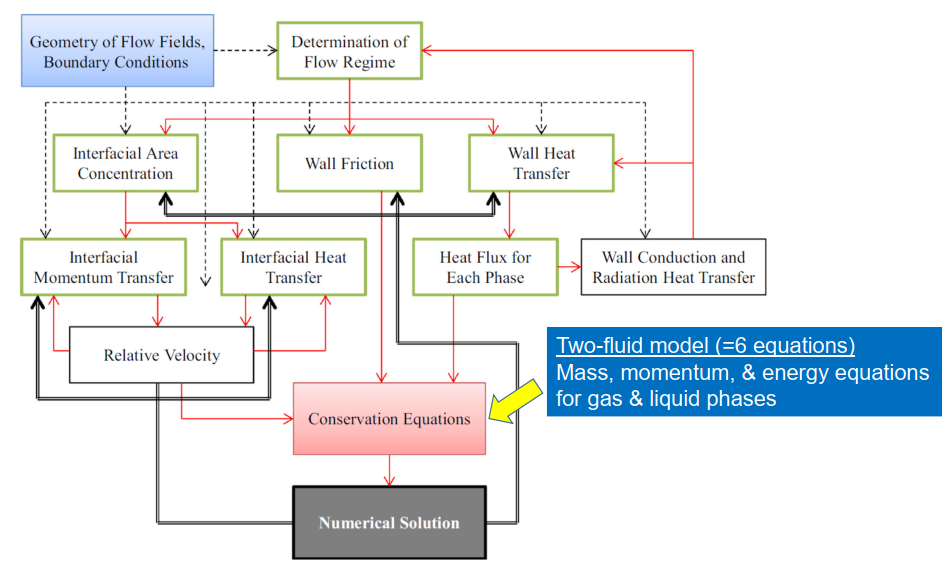
Important parameters in two-phase flow analysis [core]
- Flow regime map
- Basic idea of flow regime transition criteria
- Void fraction
- Basic idea of drift-flux model
- Interfacial area concentration
- Significance of interfacial transfer terms
- Frictional pressure drop
- Interfacial force
- Drag force
- Non-drag force (Lift force, wall lubrication force etc.)
- scaling design
- mechanistic modeling
- instrumentation development
- experiment
- computational calculation
Flow regime map

The flow regime depends on the void fraction
Void fraction
Drift velocity, which is generated by the force balance b/w buoyancy force and drag force:
: × (void fraction) : Area-averaging
One-dimensional (or area-averaged) drift-flux model:
where
In Homogeneous flow (Uniform gas distribution,
Mixture volumetric flux Center of volumetric velocity
In HEM:
Distribution parameter
Dix model for
where
- For regular pipe:
- For rectangular channel / duct:
- For rod bundle:
- For Subcooled boiling flow:
Drift velocity
Suggested by Lahey & Moody:
- Bubbly:
- Slug:
- Churn:
Development of void fraction model
- HEM, and 20% overprediction
- Slip model: Slip ratio
- Drift-flux model
Interfacial area concentration
- Mass equation
- Momentum equation
Energy equation
(Interfacial transfer term)=( Interfacial area concentration ) x ( Driving potential )
Frictional pressure drop
Lockhart-Martinelli method:
where (single phase)
and
For Two-phase multiplier, here's the Chiskolm equation:
and
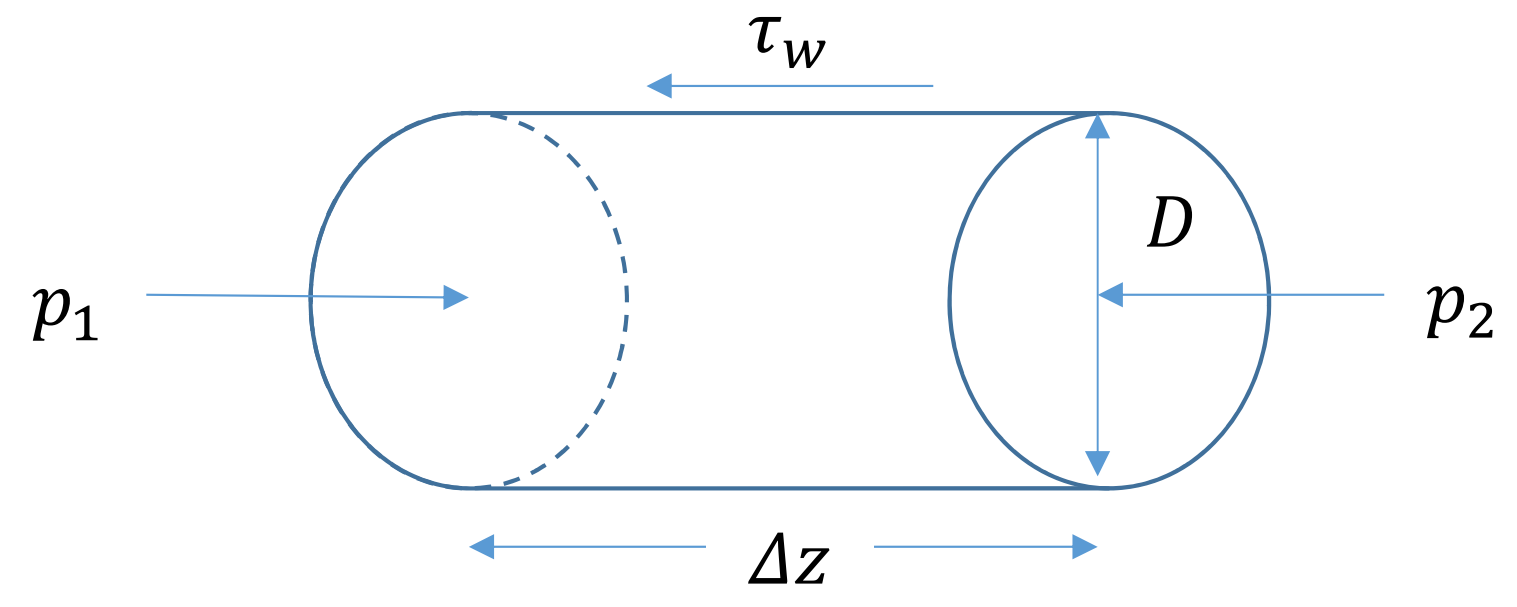
| Gas | Liquid | |
|---|---|---|
| Turbulent | Turbulent | 20 |
| Turbulent | Laminar | 12 |
| Laminar | Turbulent | 10 |
| Laminar | Laminar | 5 |
Quiz - Void fraction
Superficial gas velocity
- Flow regime
- Flow direction
- Flow channel geometry
- Channel diameter
where
and
Thus
Quiz - Flow regime transition
Consider air-water flow in a vertical
- Flow direction
- Flow channel geometry
- Channel diameter
where
and
where
Quiz - Interfacial area concentration
Consider air-water flow in a vertical
Thus
Quiz2
A saturated steam-water mixture at
Here,
- What is the value of the distribution parameter?
- What is the value of the drift velocity in
?
- What is the value of superficial gas velocity in
?
- What is the value of gas velocity in
?
- What is the value of the void fraction?
- What is the value of the bubble Sauter mean diameter in
?
- What is the value of the interfacial area concentration in
?
- What is the value of the two-phase mixture density in
?
- What is the value of the two-phase mass flux in
?
- What is the value of the flow quality?